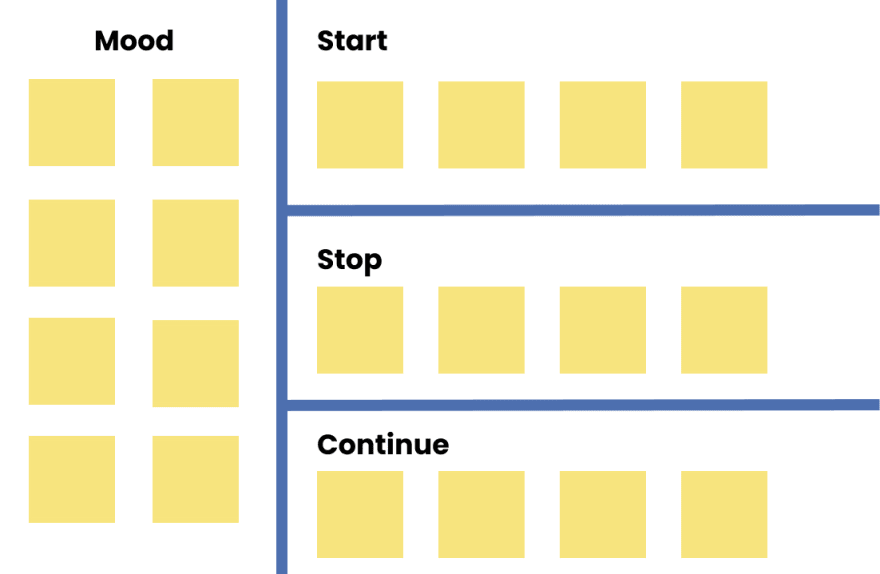For anyone who incorporates an Agile methodology inside their company, a Sprint Retrospective will be nothing new.
A "Sprint Retrospective" is an opportunity for a scrum team to look back on the previous sprint and create an action plan for improvements to be performed during the upcoming sprint. It serves as a way of process/team improvement and overall reflection for the team.
(I will be calling the Retrospective a 'Retro' for ease)
======
An Opportunity to Facilitate
======
Recently, I have been offered the opportunity to facilitate a Sprint Retro for our team so I decided to take the chance and see what it would be like and how well I could run one myself. At that point, I had the basic knowledge of a Sprint Retro but hosting one in a professional environment was breaching new territory.
Before I hosted the Retro, I did some brief research into the general structure of a Retro, popular ways to run it and some activities I could run. I came across the general basic foundation of a Retro and decided to go with a simple but effective method that is commonly used:
The Start, Stop, Continue Method
This method typically consists of three categories that the team can write down items for. It serves as a base for guiding reflection mainly to elicit positive and negative feedback as well as uncover any action items for improvement.
Start (What the team should start doing) - Action items that the team will begin implementing in the next sprint.
Stop (What the team should stop doing) - Looking back on the previous sprint and identifying things that didn't work well and the team should stop doing.
Continue (What the team should continue doing): Identifying items that worked well in the previous sprint and the team should continue implementing.
======
My Plan Going Into the Retro
======
As far as my plan going into the Retro was, I had a one-hour time span to do the Retro within, so my schedule was roughly planned as follows:
Icebreaker: 2 Lies 1 Truth Game (15min)
- A simple but fun game that would get the team comfortable and engaged before starting the retrospective.
Activity: Gauge the Mood of the team (15min)
- Get everyone to write on a post-it note words that describe how they felt during the previous sprint. They could write as many as they wanted. Once written down and stuck on the board, a discussion would be had about why these feelings were experienced.
Activity: Run through the Start Stop Continue Method (15min)
- I would draw up the layout on the board and begin with the method I had chosen from my research (Start, Stop, Continue) including the Mood activity which ended up looking like this:
- Each member would write down items on a post-it note and stick it on the whiteboard for each category.
Discussion: Group discussion on the items and creation of action items (15min)
- Group together post-it note items (if necessary) and begin to discuss each item/group.
- Determine action items from the discussion and make note of them to be applied next sprint.
======
Constructive Feedback from the Team
======
As one might think, not everything went according to plan. There were issues such as time constraints, missed areas of discussion and not enough preparation. Considering this was my first time running a Retro, I'm aware there are many many aspects I could definitely improve on.
Given the feedback I have asked my team to provide after running the Retro, things I will look out for and try differently next time are:
Previous Retro Action Items: Discussion of previous action items from the last Retro was missed in the schedule. Previous action items should be discussed and updated with the team.
Discussions: Allow for adequate time for discussions. Running out of time for action items to be assigned and followed up in the next Retro.
Preparation: Prior preparation to help save time. This includes any tools that might need to be set up beforehand. Save downtime when the Retro begins.
Missing Scrum Members: Although sometimes out of our control, we should endeavor to have all team members present for the Retro and have an active voice in the discussion.
Don't be afraid to take more control as the facilitator: Mix things up in delivery, think of it as a team-building exercise and get people engaged and comfortable.
Many thanks to my team members for providing me with their constructive feedback!
======
Ideas for the next time
======
Next time I have the chance to run a Sprint Retro, some extra ideas I believe I could incorporate into my schedule next time are:
Sprint Award of the Retro: Have everyone vote on a post-it note about a member whom they acknowledge or believe should be praised or given credit. Readout each post-it note.
Action Item Voting: After the board has been filled with post-it notes and discussed, have everyone vote on 3 of the most important items from each category and use the ones with the top votes as the highest priority action items.
======
Final Thoughts
======
I think it's a great idea that everyone on the team should have a turn at facilitating a Retro. By alternating facilitators, it allows each retrospective to have a different format as well as a unique perspective since it won't always be the same individual running it.
In the end, Sprint Retros are important when working with Agile as they provide a chance for the team to reflect and work together to refine and improve the team processes for the next sprint. It's an iterative loop for improvement that plays an important part in Agile.
======
Questions for you!
======
- What are your thoughts around alternating facilitators for a Retro?
- How do you personally facilitate a Retro? Is there a schedule you like to follow?
- Do you have any ideas that I could use in my next Retro?





Top comments (0)